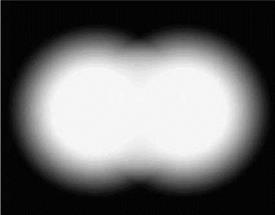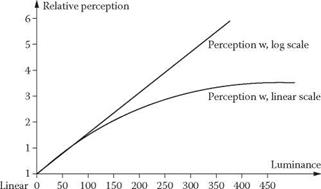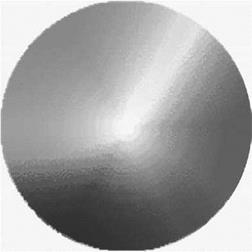Contrast enables the human brain to process perceived images. Without contrast, images cannot be perceived by the human brain. For example, it would be impossible to perceive anything in a completely white room with totally even light on all
|
FIGURE 4.2 Perception and the human eye. (See colour insert.) |
|
Log 0 50 100 200 400 800 1k 5k 6k FIGURE 4.3 Relative perception and luminance. |
surfaces. The eye will still see the light, nothing is invisible; it is just not possible to distinguish one thing from another. The essential ingredient for perception is contrast and, in this example, there is a lack of contrast (Figure 4.4).
The eye is capable of registering a contrast range of approximately 1000:1. This means that light sources with a luminance value below 1/30th of the adaptation level will be perceived as black, and light sources with a luminance value exceeding 30 times the adaptation level will be perceived as white. This limitation explains why we have difficulty perceiving details in the dark shadows on a bright and sunny day or distinguishing details in a bright cloudy sky.
4.4.3 Colours
Colours comprise a range of light at different wavelengths, and the perception of colours is dependent on both the adaptation level and contrast in the perceived image (Figure 4.5).
If the contrast level drops, the colours will be washed out. A similar effect can be seen by pouring water into a glass of red fruit juice; the dilution effect of the clear liquid (the water) changes the colour of the darker liquid (the fruit juice). Without black (that is, darkness) it is impossible to have colours. The actual balance of colours in a given light source is the colour temperature measured in degrees Kelvin. Pure daylight white has a colour temperature of 5600 Kelvin whereas standard TV studio lighting has a colour temperature of 3200 Kelvin. The lower the colour temperature, the more dominance there will be at the red end of the spectrum (Figure 4.6a, b).
To some extent the eye adapts to the colour temperature, which is the reason why white can be perceived as white even though the colour temperature has changed.
A typical example is the eye’s adaptation to standard light bulbs, with a low colour temperature, but still the colours can be perceived almost as we would in pure white light. When comparing the two different ‘whites’ and perceiving the colours
|
FIGURE 4.4 The same image against contrasting background. |
|
FIGURE 4.5 The colour spectrum. (See colour insert.) |
simultaneously, the low-temperature ‘white’ is clearly reddish or yellow compared to the pure white.







